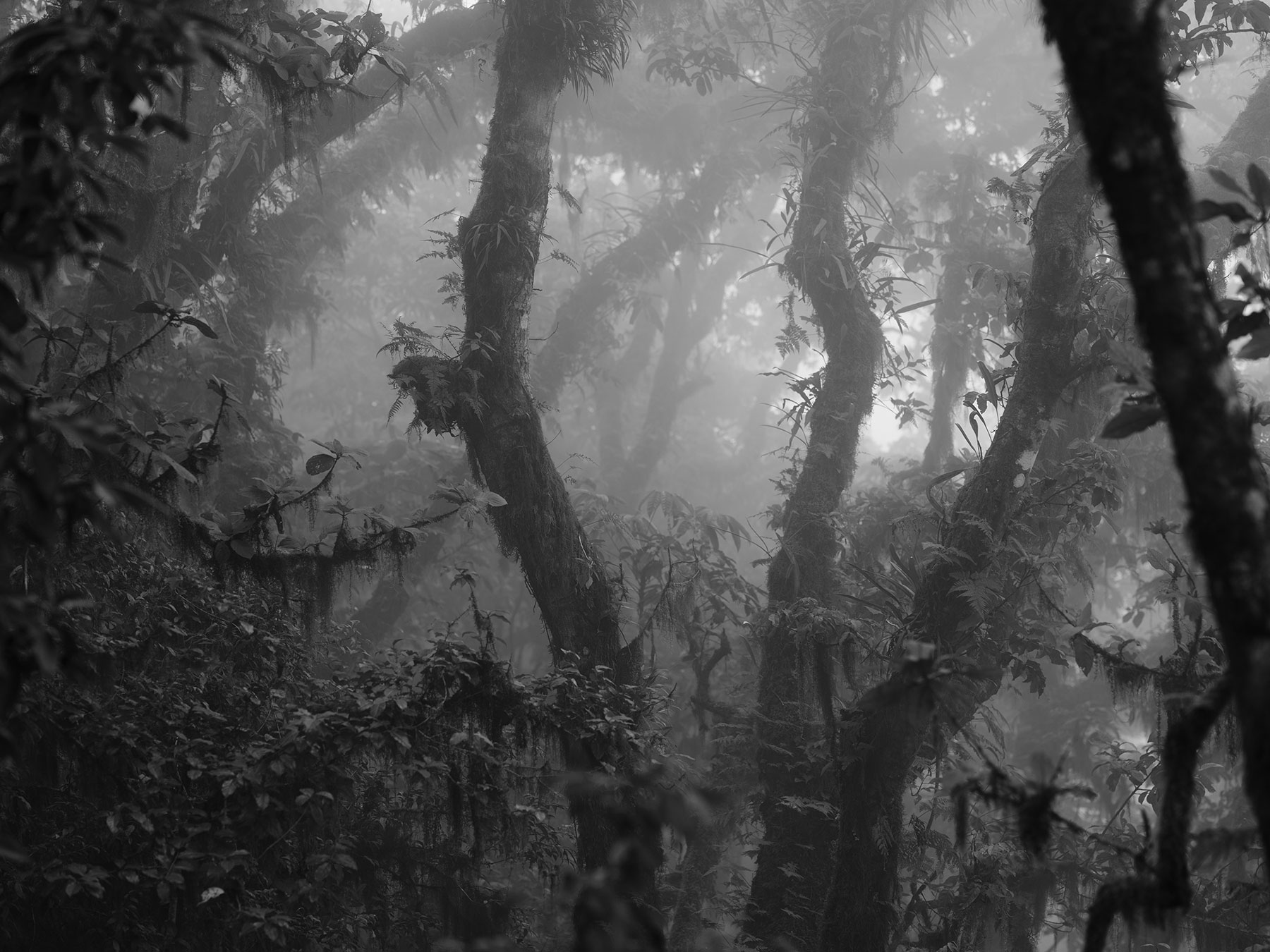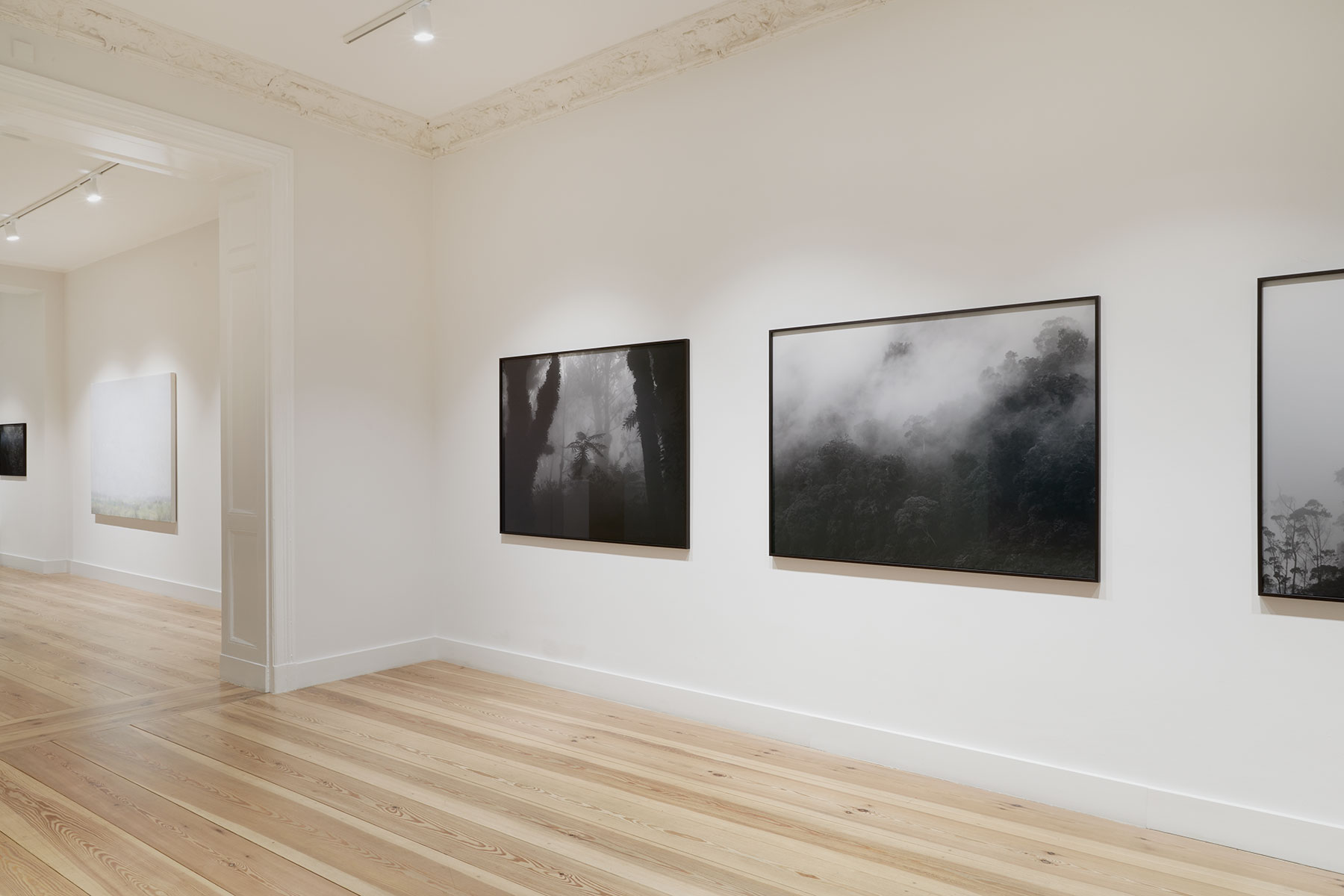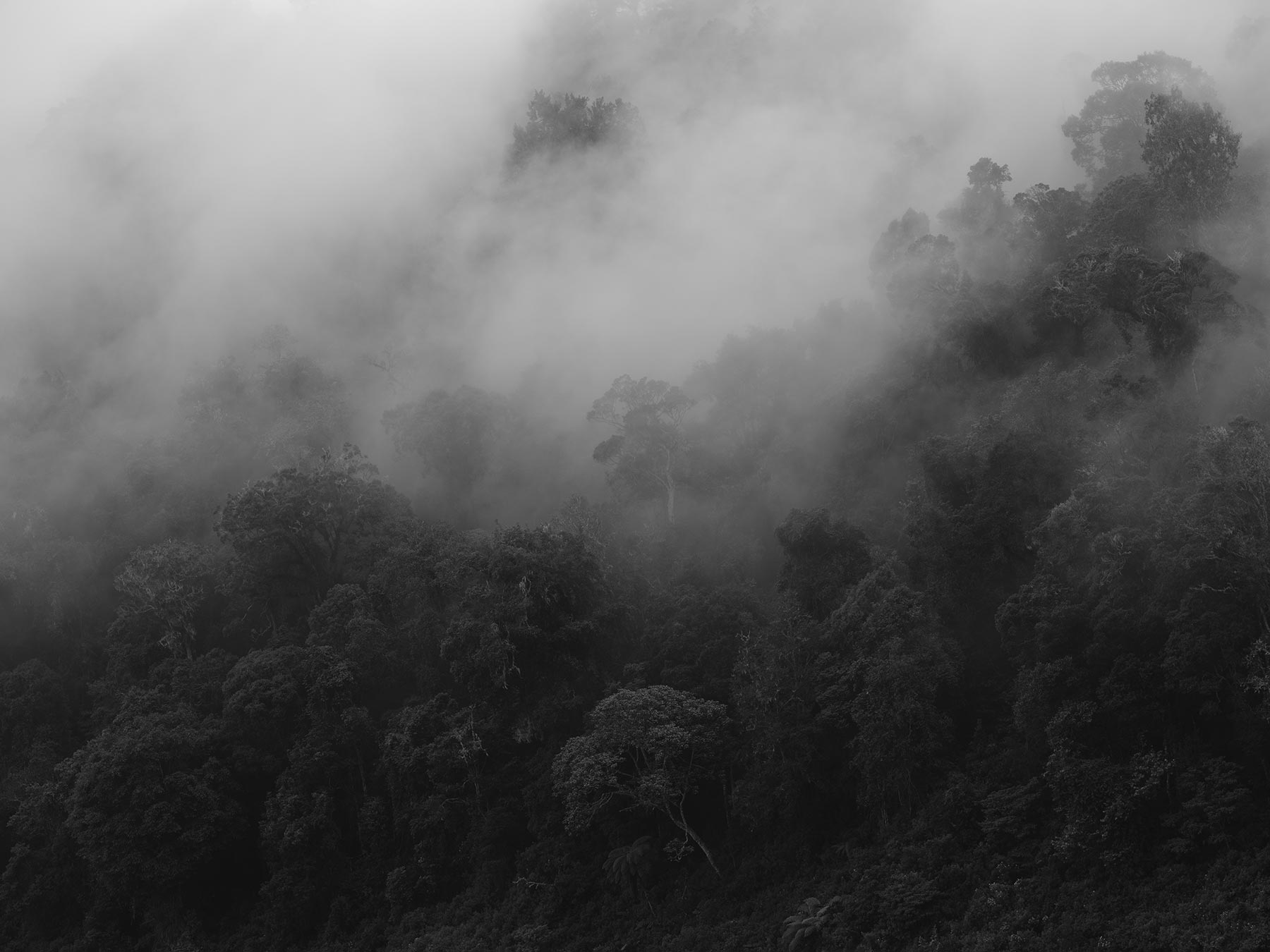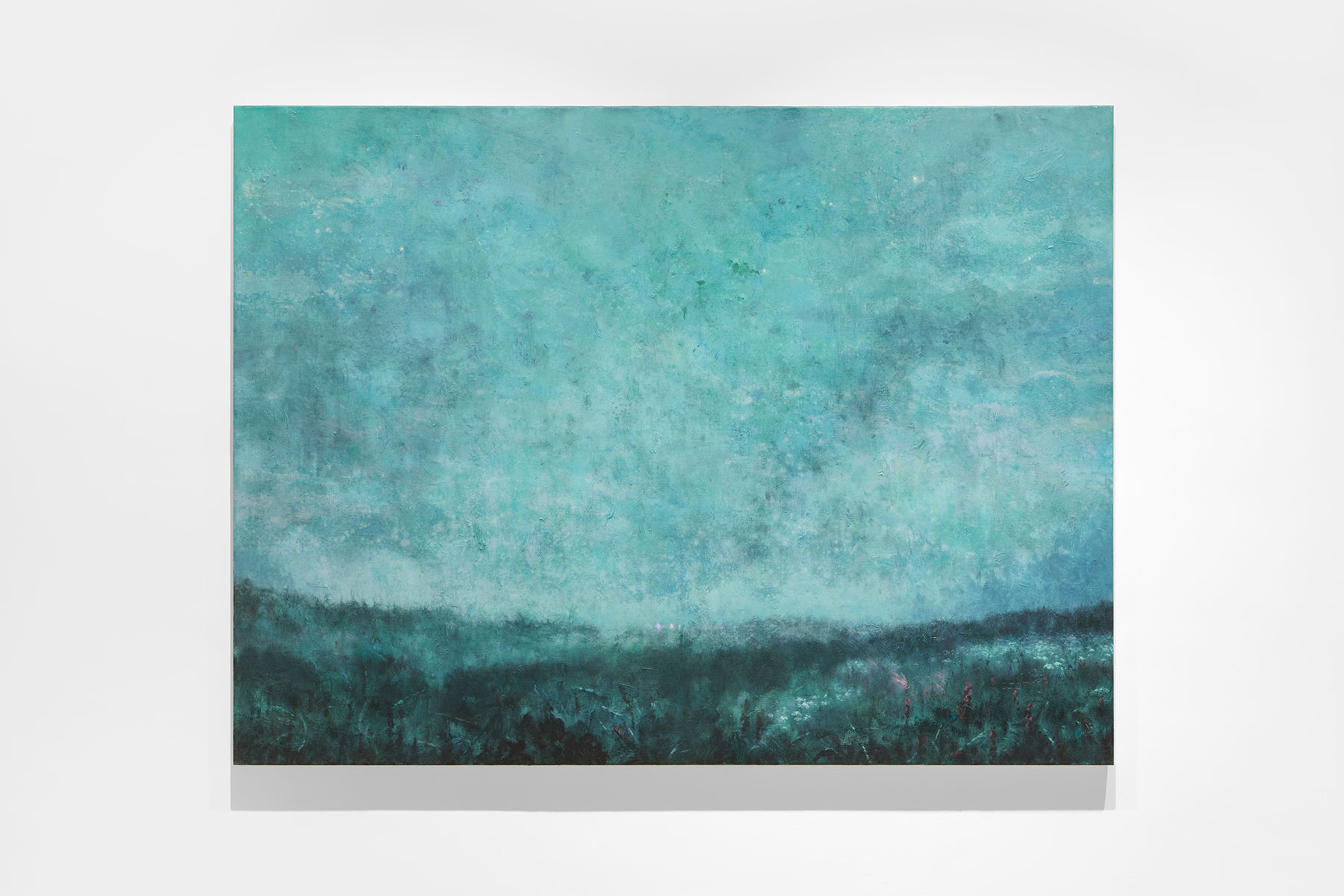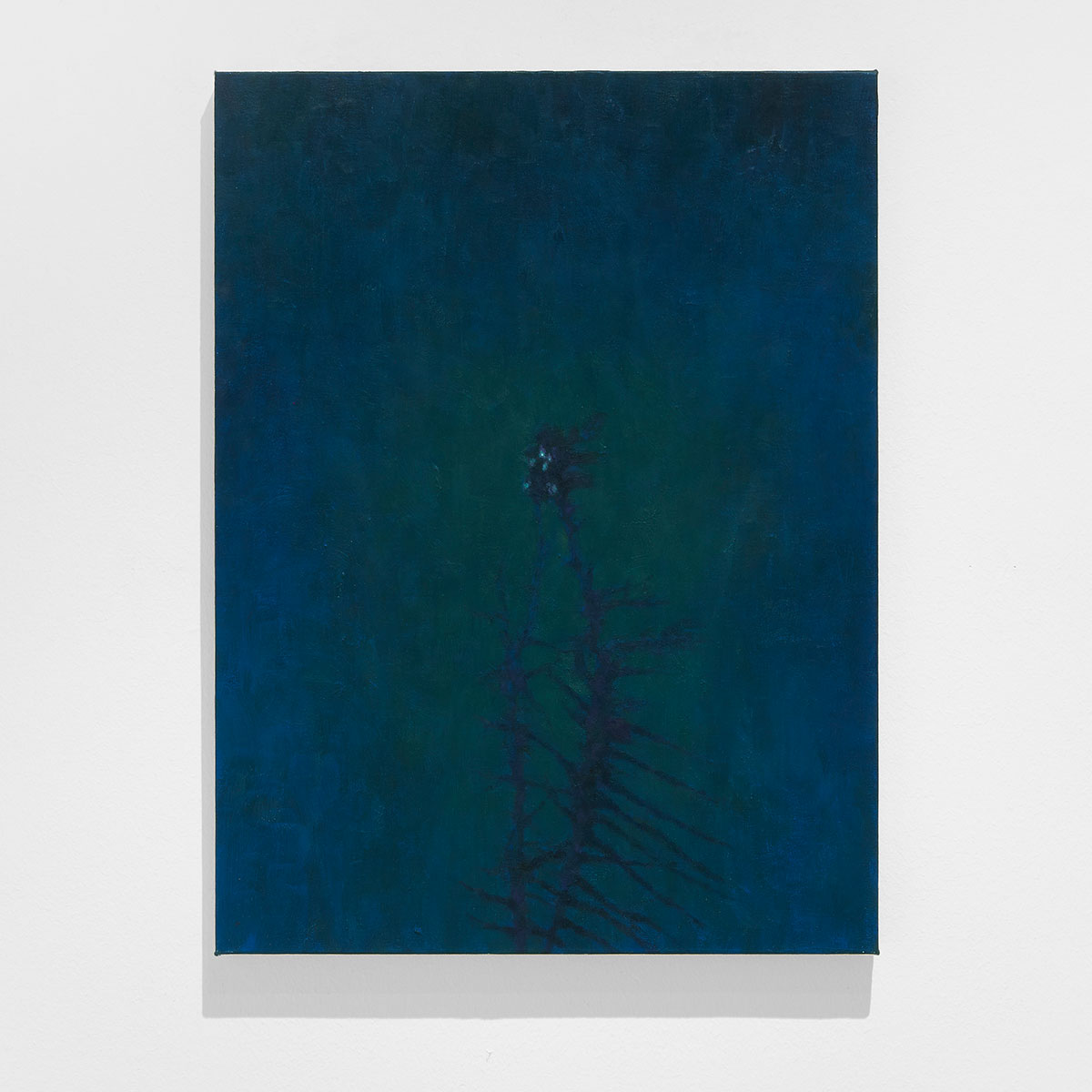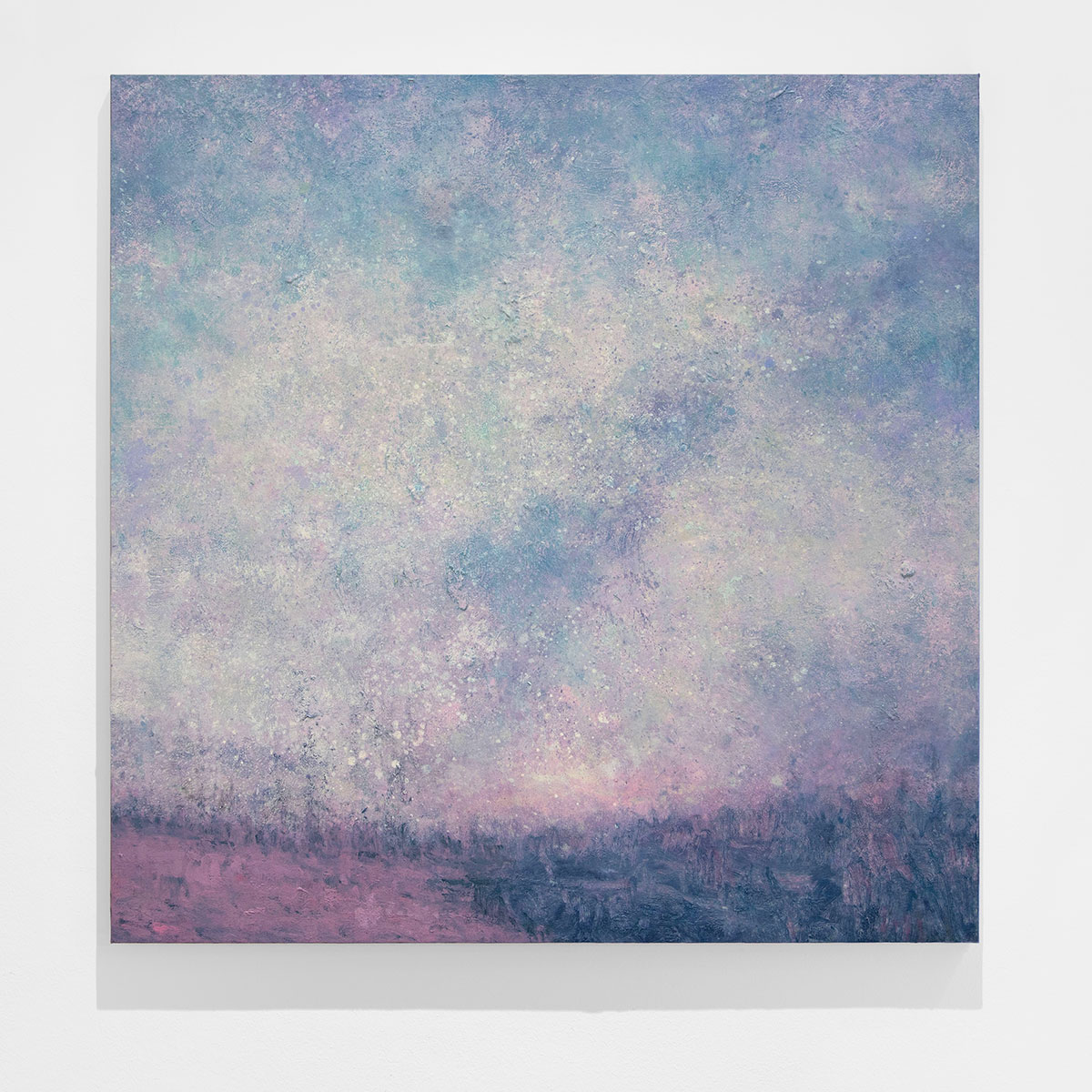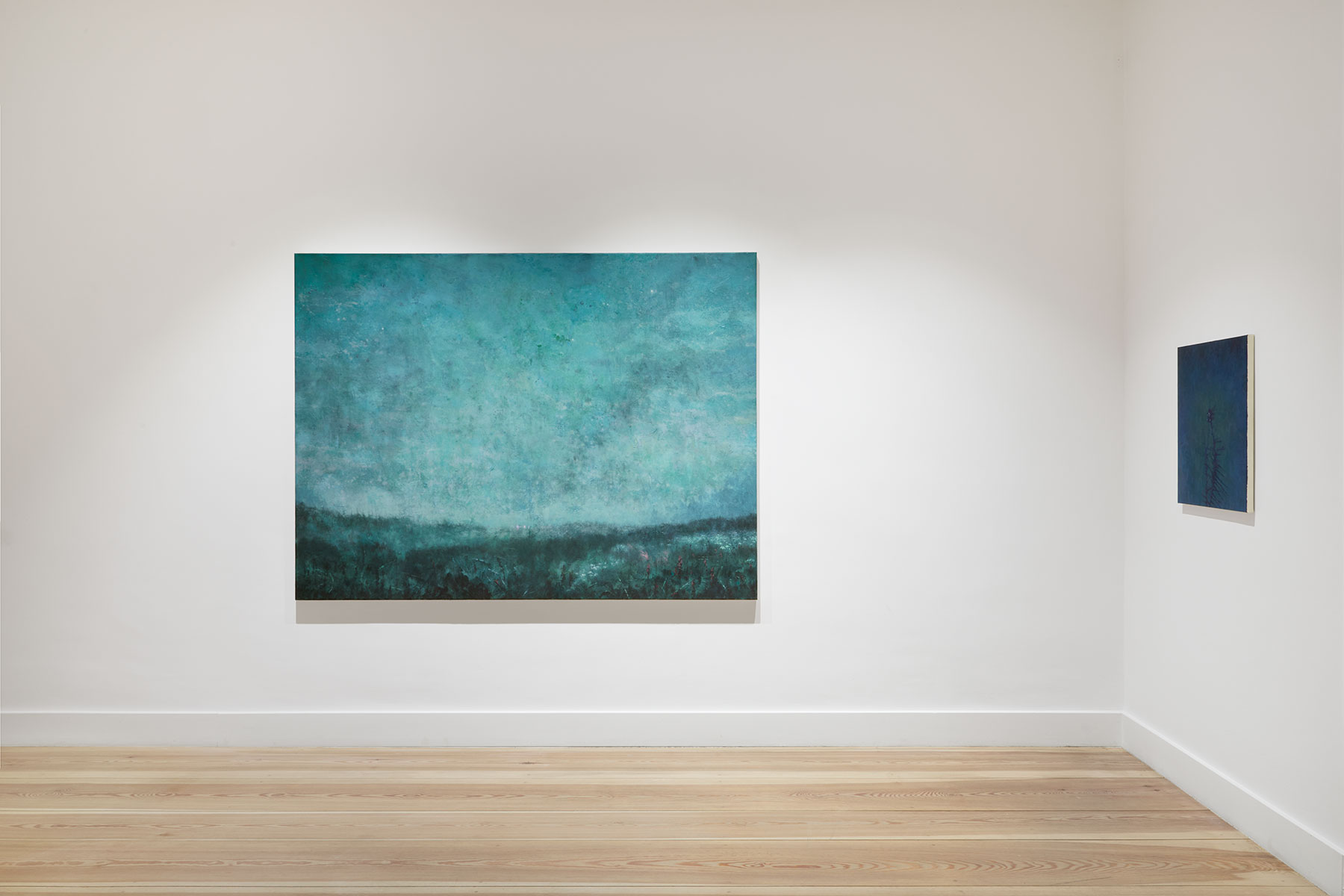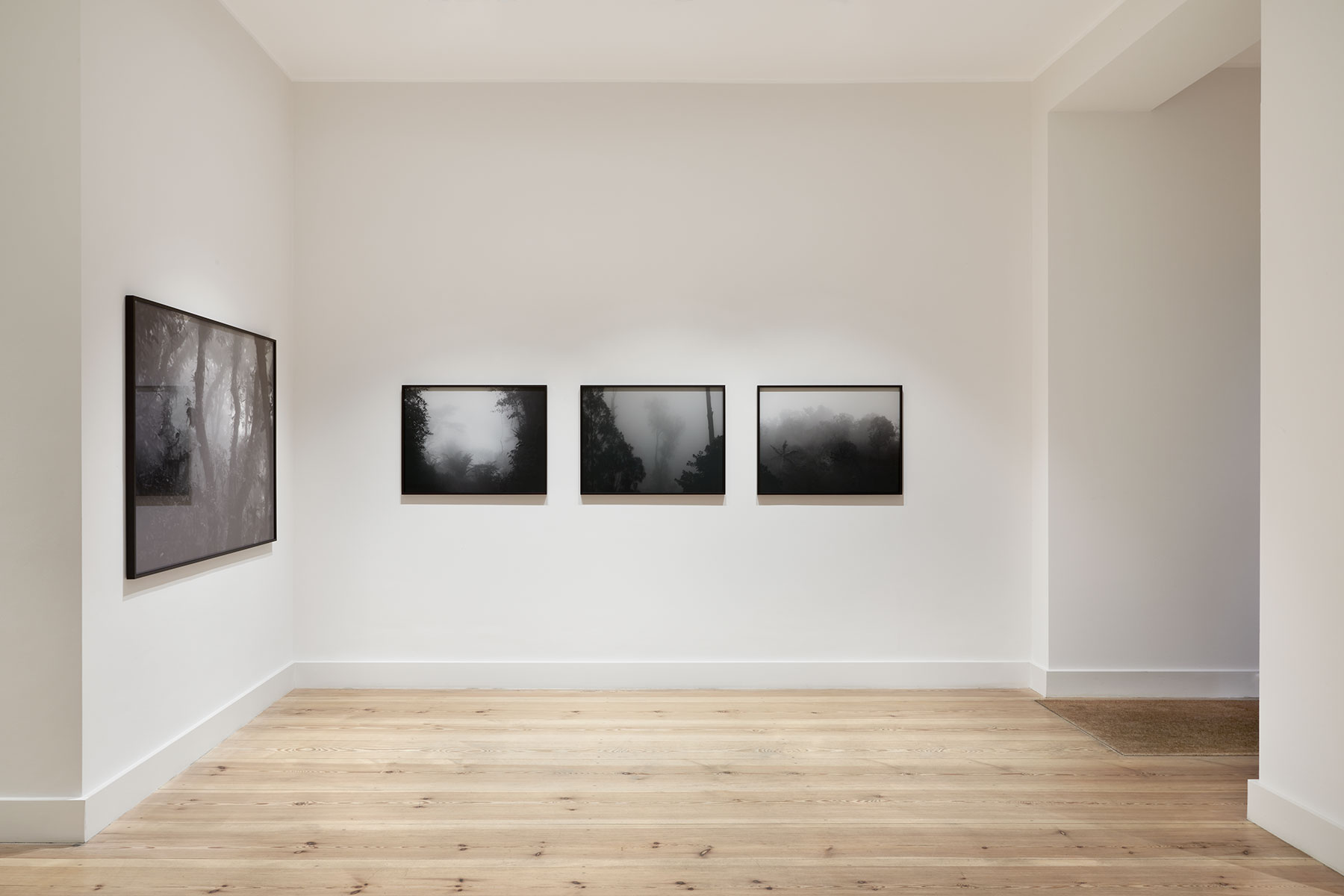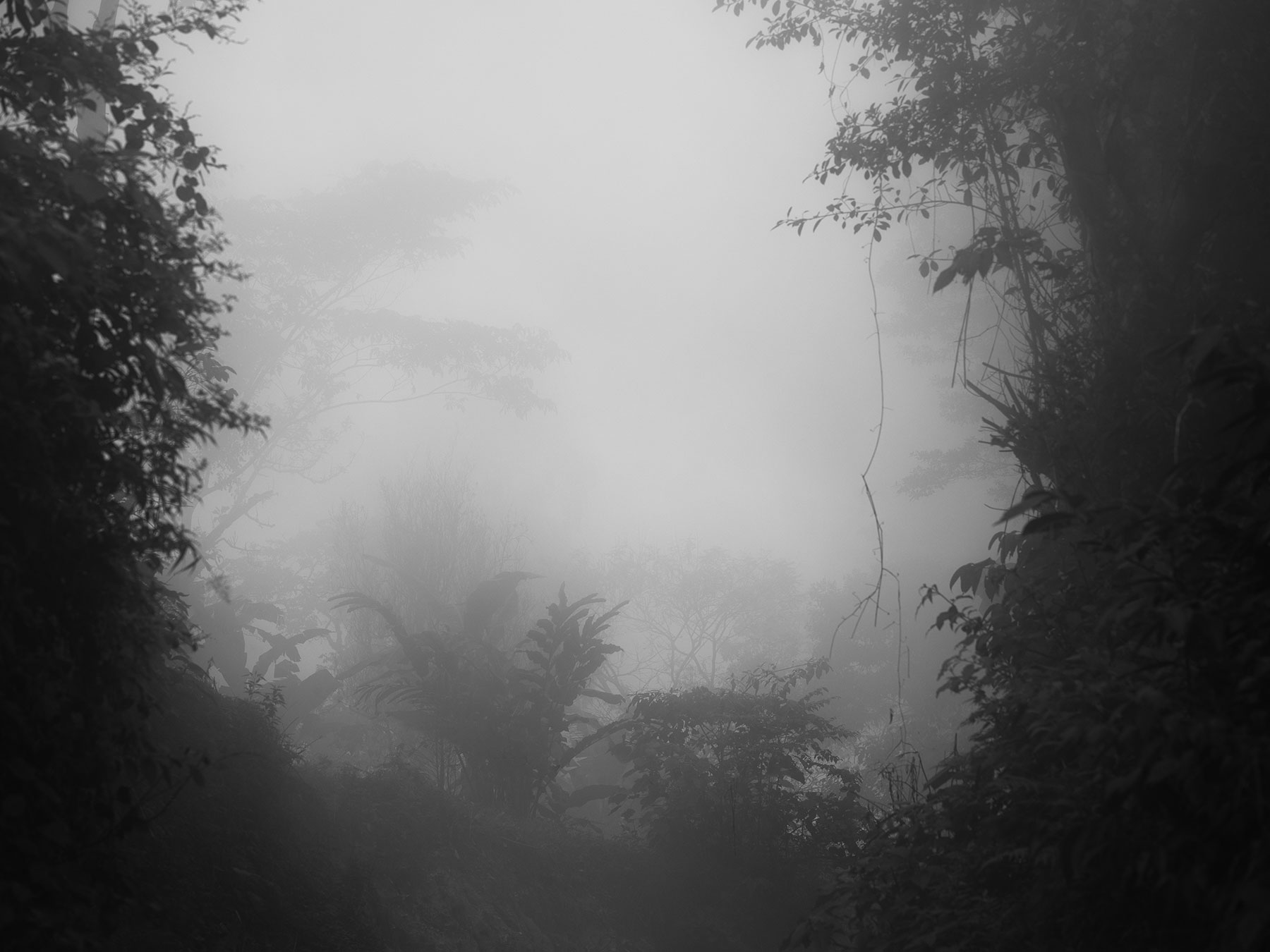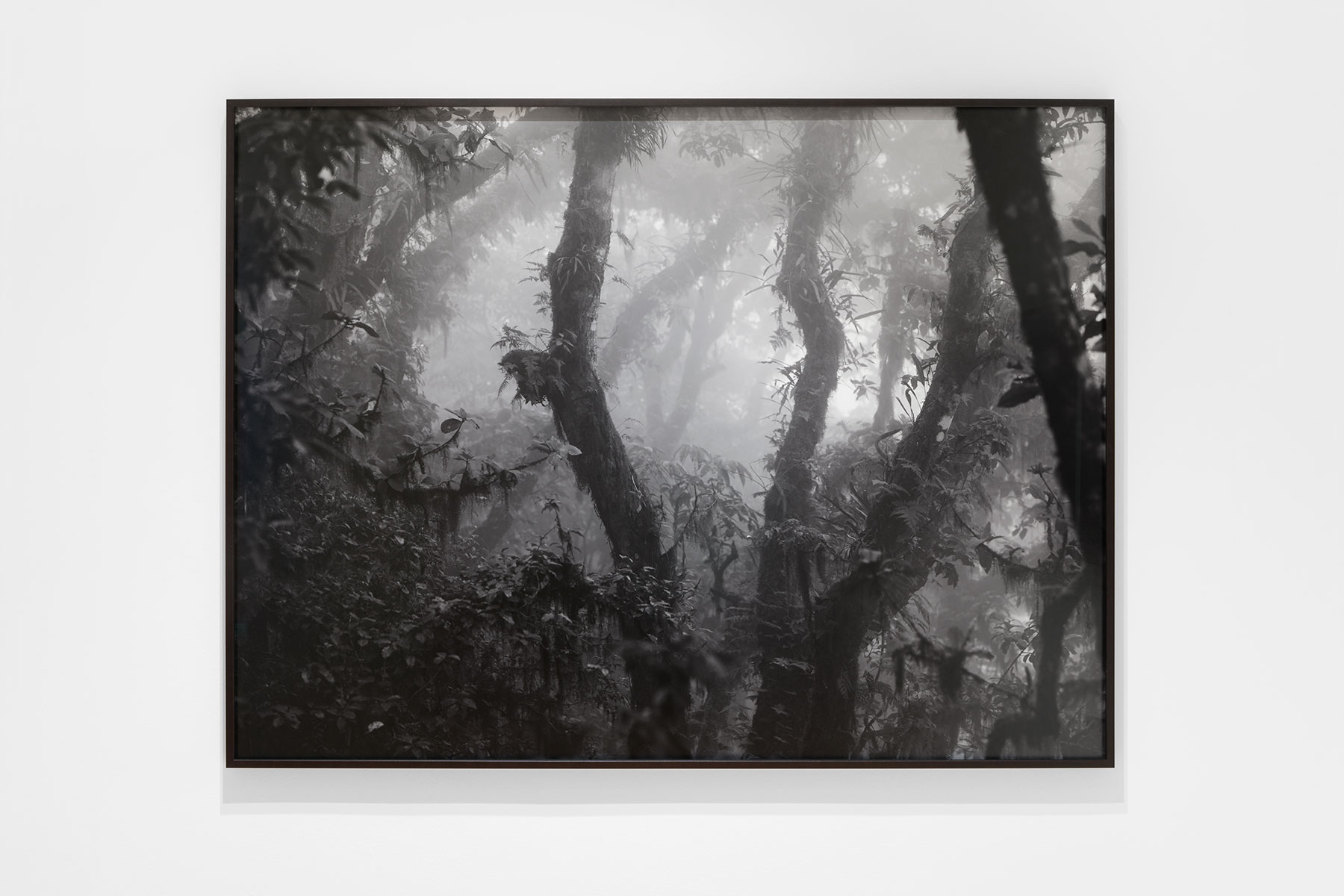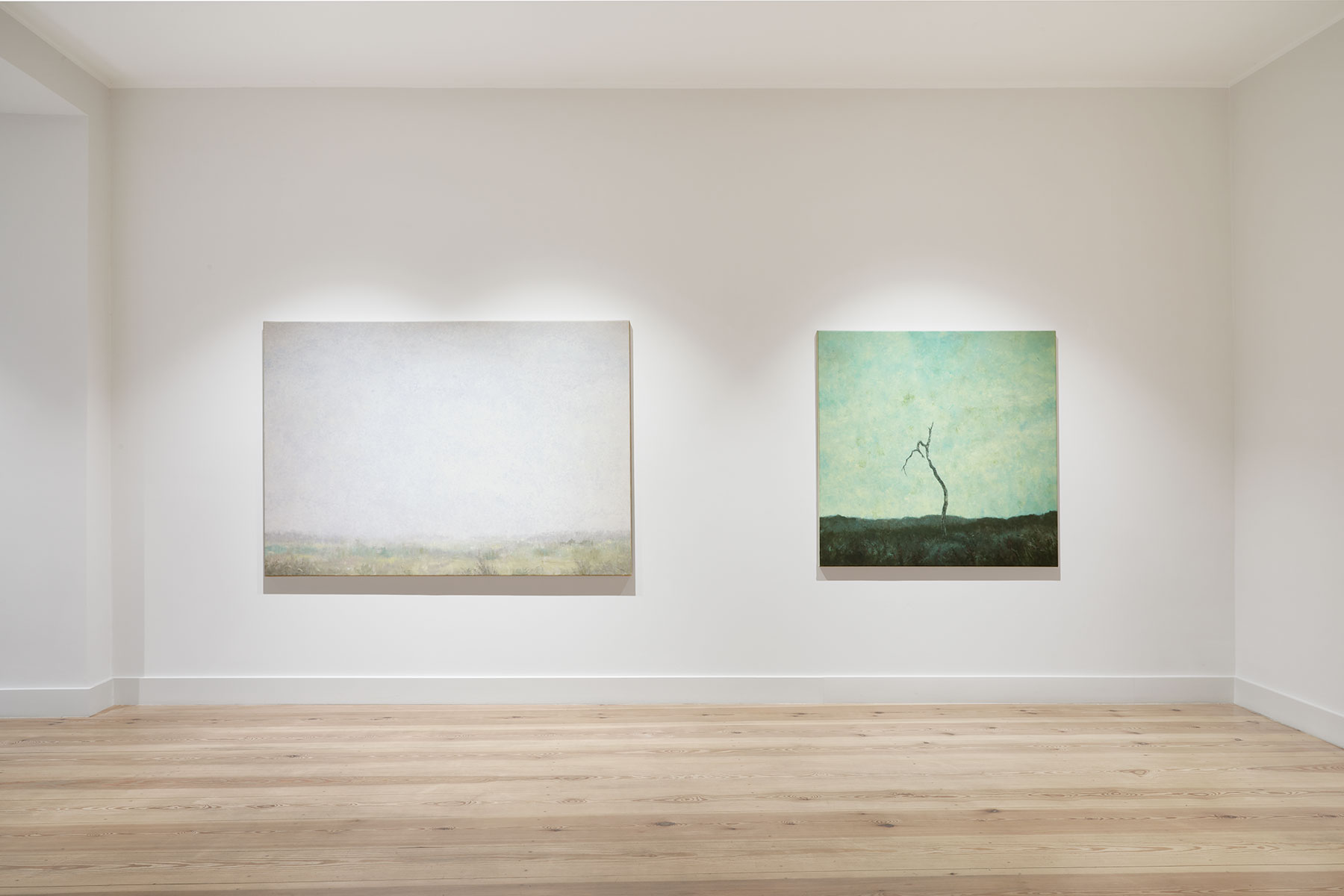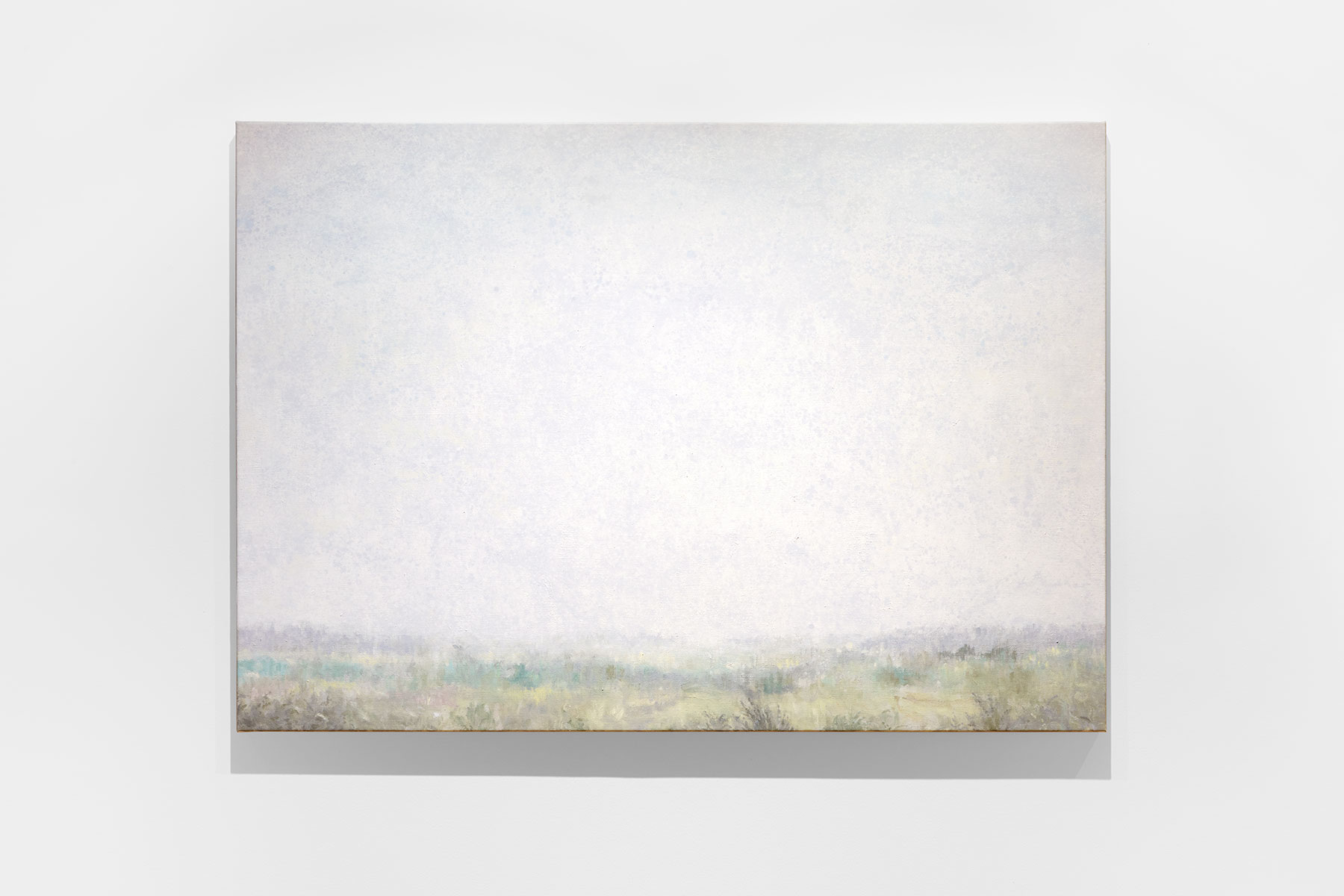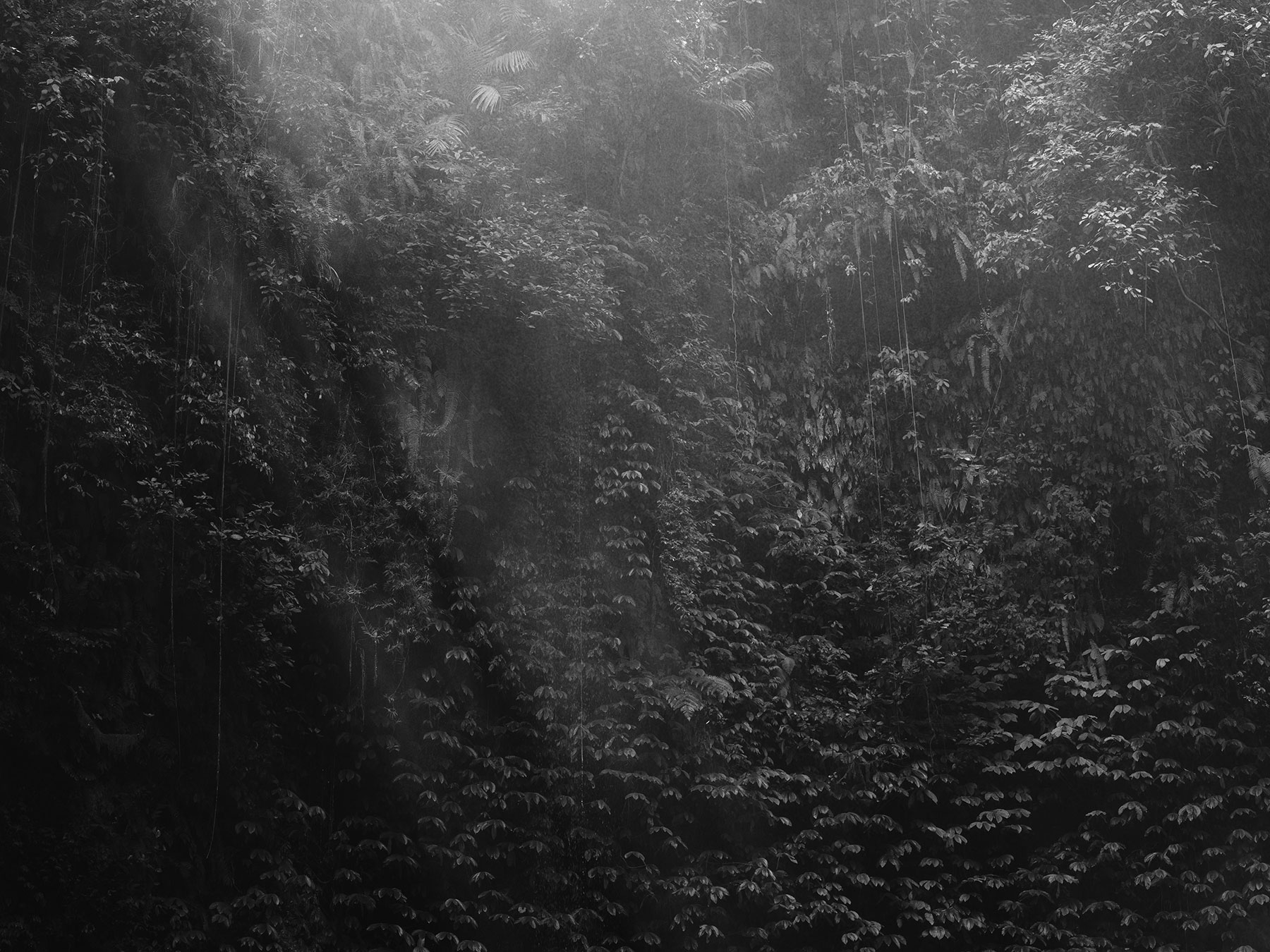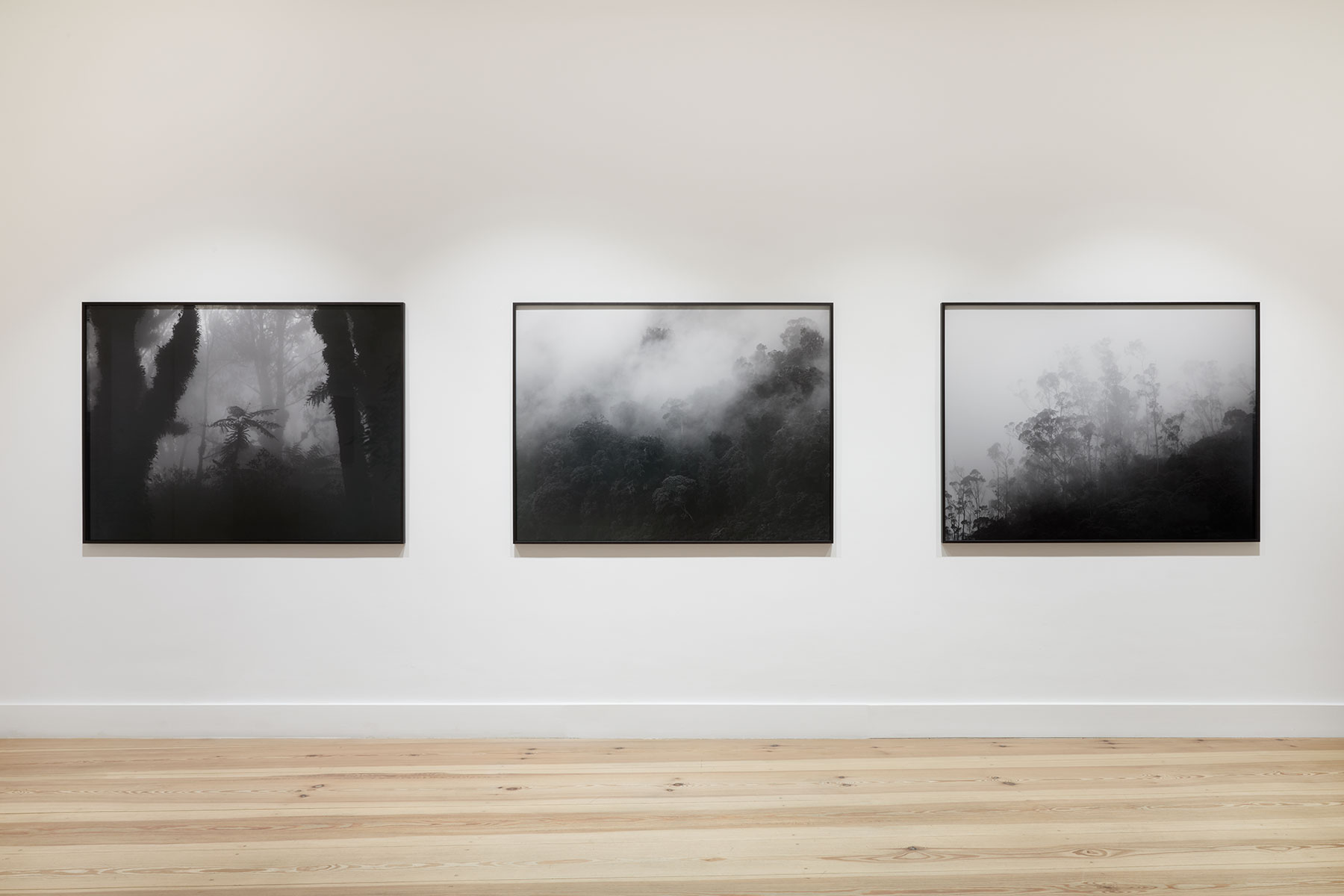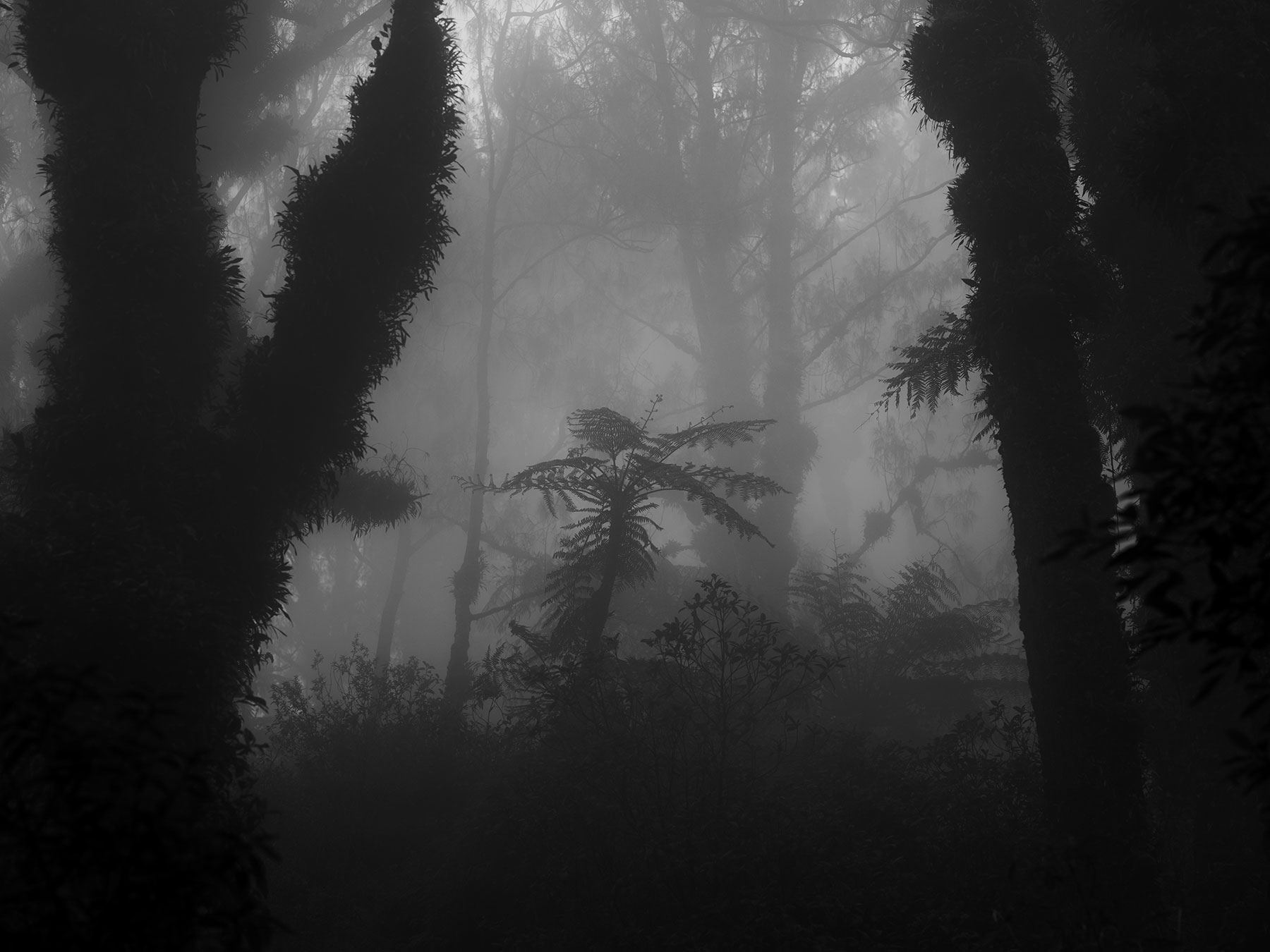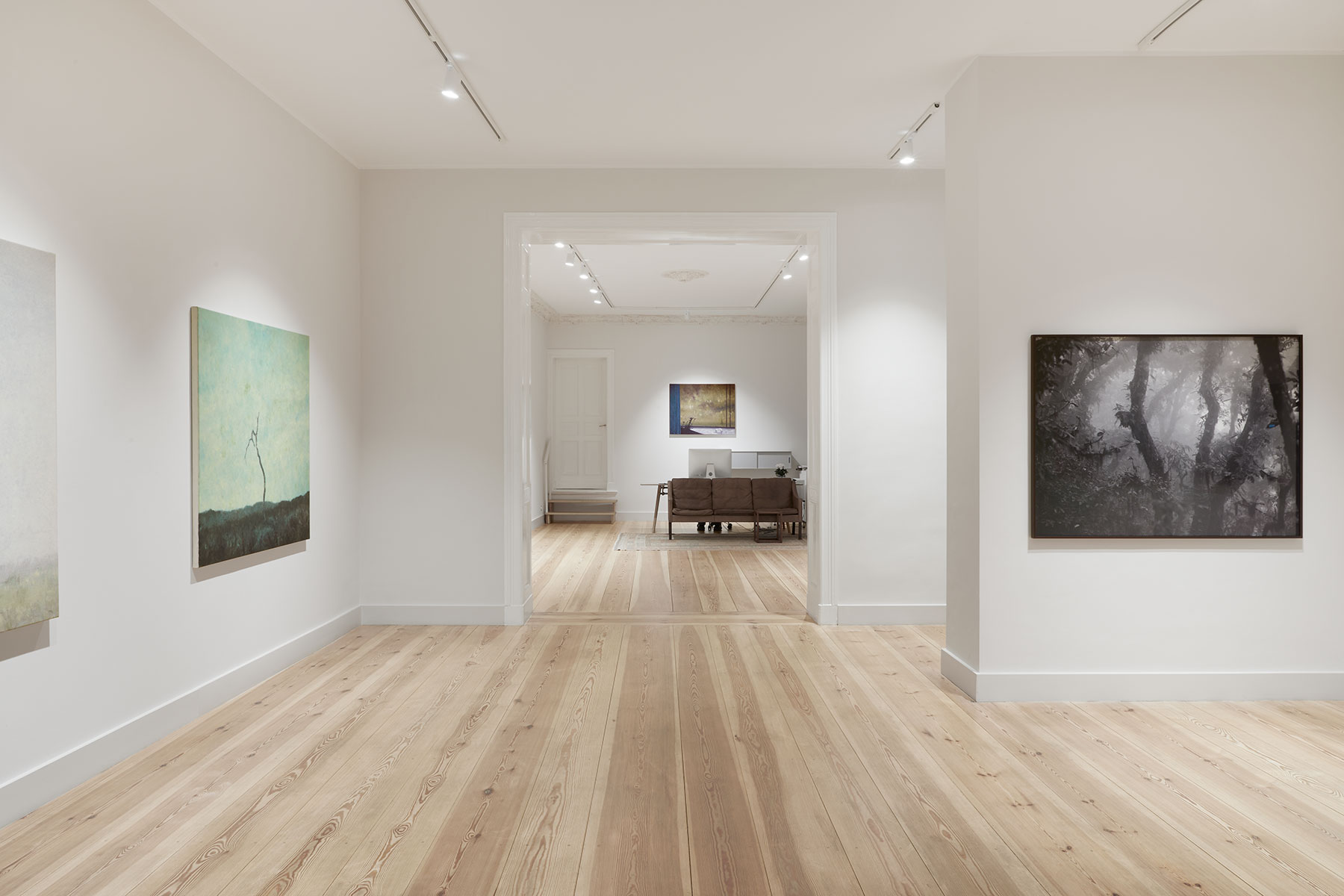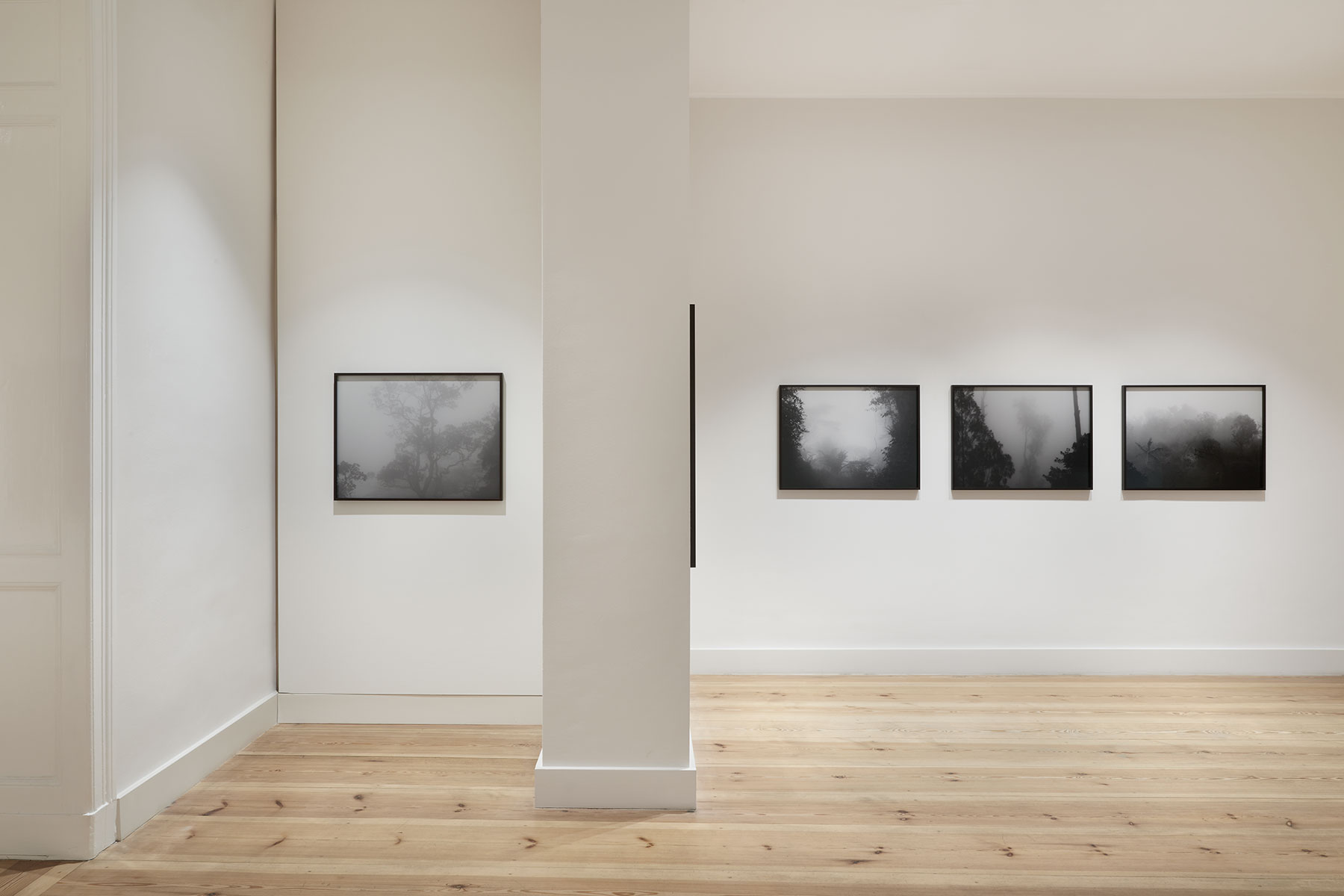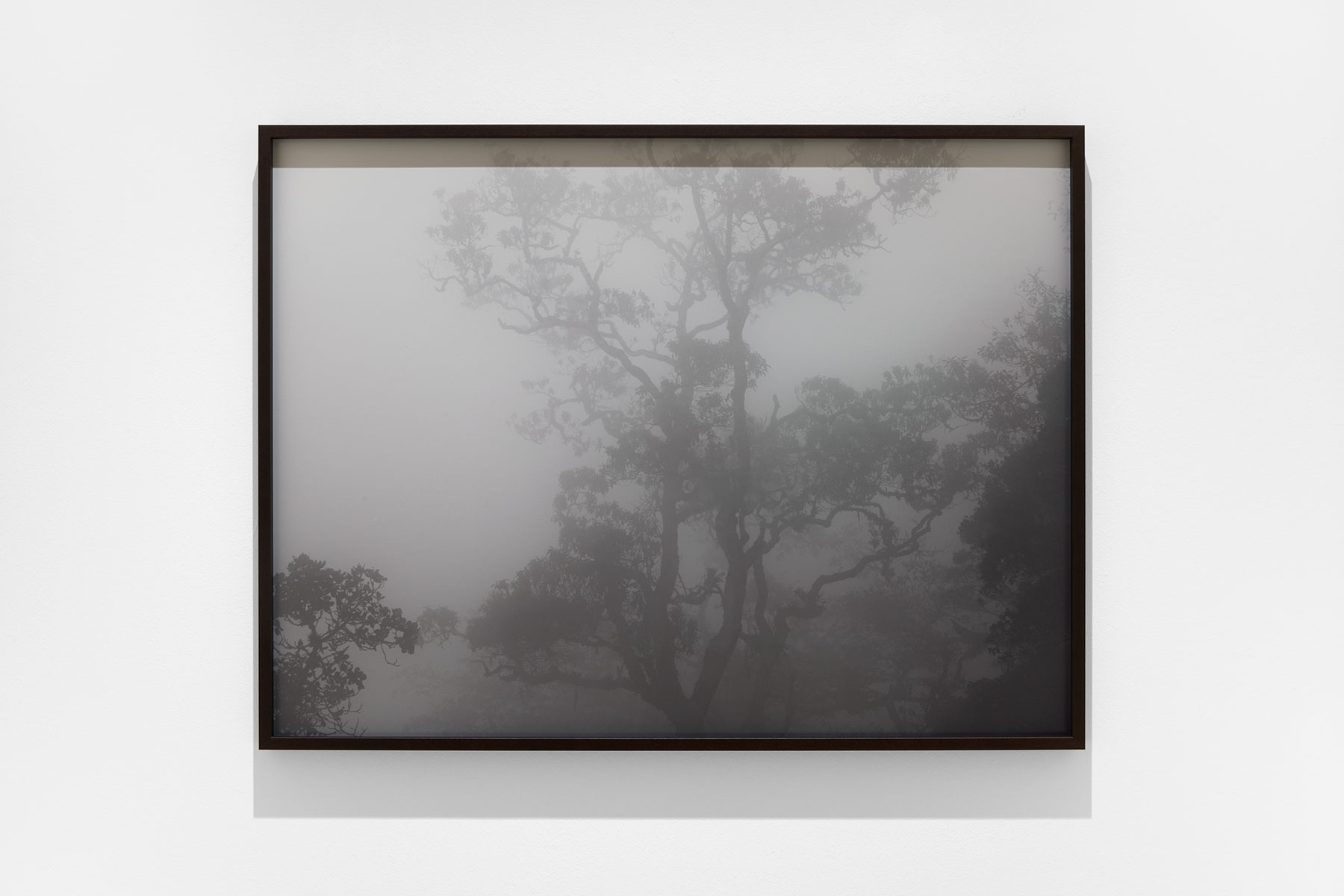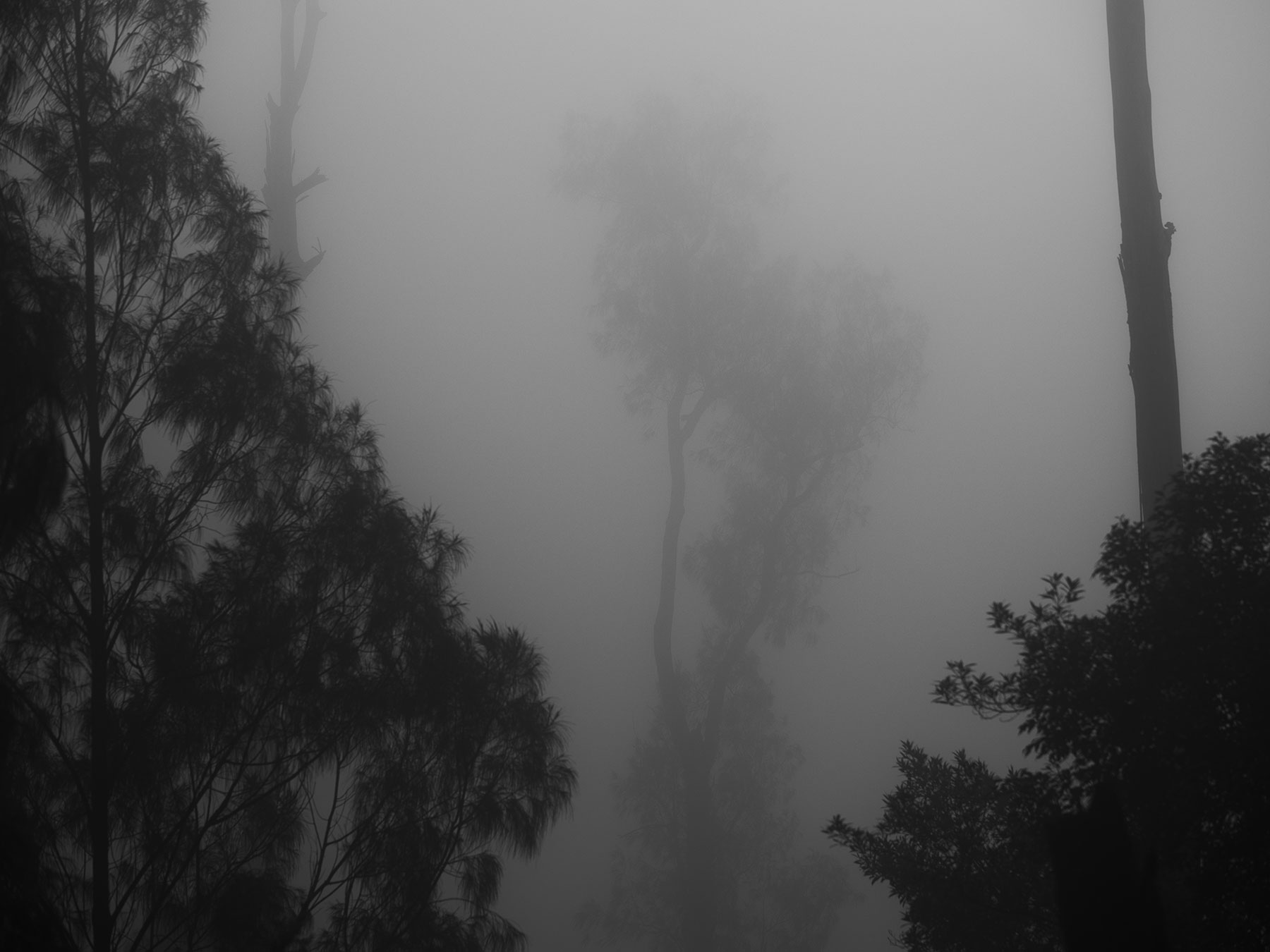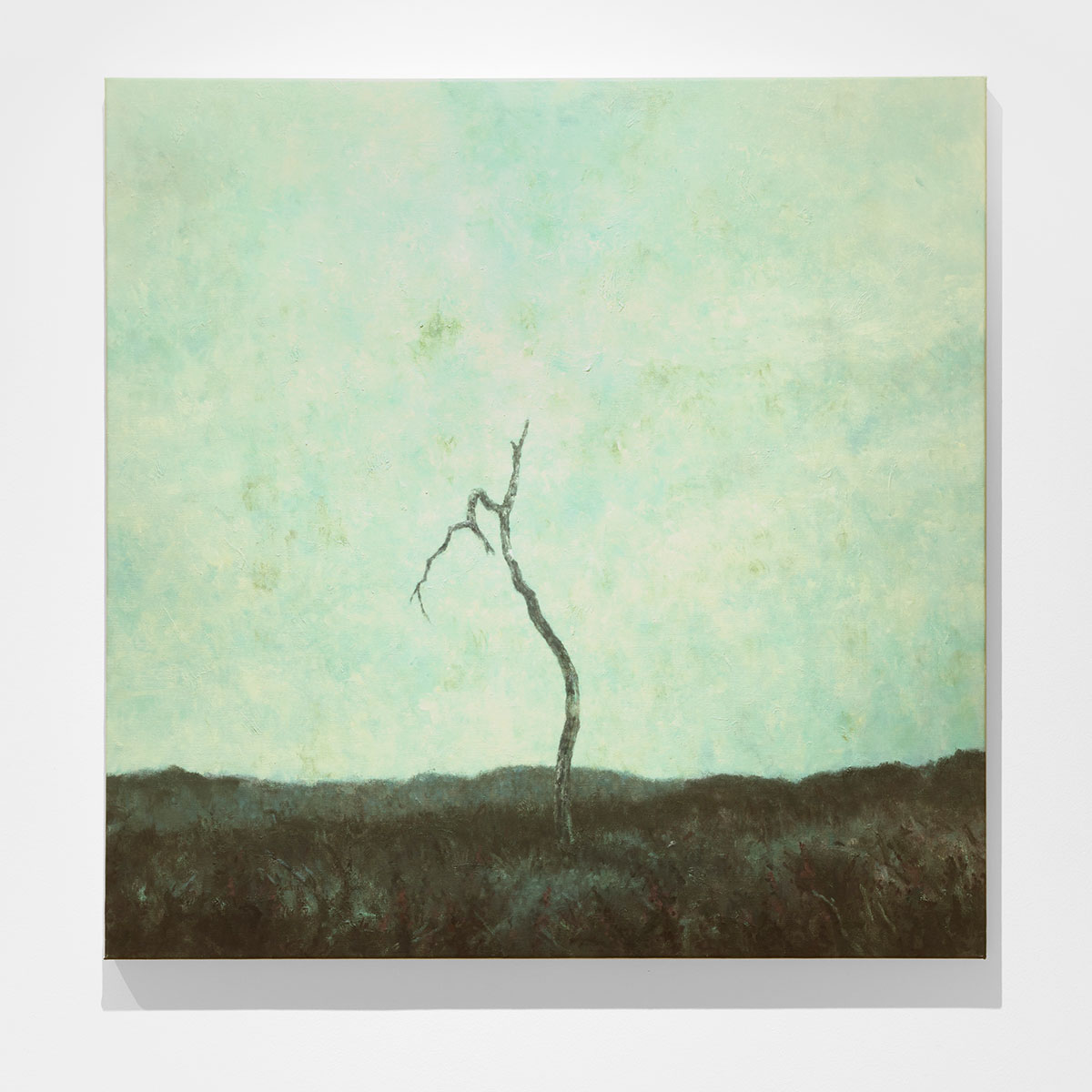
The Invention of Solitude
„The Invention of Solitude“, die Erfindung der Einsamkeit, ist ein 1982 erschienenes biografisches Buch von Paul Auster. Wir haben den Titel gewählt, weil er die Atmosphäre der Ausstellung sehr gut wiedergibt.
Der Anlass der Fotos von Ludwig Spaude ist ein biografischer. Seine Kindheitsträume führen ihn in die Nebelwälder Nicaraguas, Costa Ricas, Madeiras, Indonesiens und Kolumbiens, wo er jene Bilder wiederfindet, die er einst geträumt hat. Über Wochen ist er allein mit der Kamera unterwegs, hin und her bewegt zwischen dem realen Erleben und seinen Erinnerungen. Was er sieht, erfüllt seine Träume, fügt ihnen aber auch Neues und Unerwartetes hinzu. Dazu kommen die Geräusche, die körperlichen Anstrengungen, das Fotografieren, das Reflexion und Entscheidung verlangt.
In der Einsamkeit des Nebelwalds verbinden sich innere und äußere Welt, fließen Vergangenheit und Augenblick zusammen. Dem Fotografen gelingt es, empfindungsreiche Situationen festzuhalten. Sie wirken einerseits traumhaft-verschwommen, andererseits sind sie ein gestochen scharfes Abbild der Realität. Das macht sie so besonders.
Sid Gastl muss nicht auf Reisen gehen. Er findet alles, was er für seine Bilder braucht, im Atelier. Sie entstehen jedoch auf die gleiche Weise: aus dem Zusammenspiel von Innerem und Äußerem. Realität gibt es streng genommen nicht, nur die von ihm erschaffene. Er zeichnet einen Baum, ein Schiff, einen Wald – alles Reale, das er in das Bild einfließen lassen will. Durch die Wahl der Farben bestimmt er die Atmosphäre und Wirkung der Malerei. Auch bei ihm herrscht das träumerisch Vage vor. Denn er ist davon überzeugt, dass wir niemals alles erkennen können. Das Sein ist immer Erscheinung und wie es wirklich ist, bleibt sein Geheimnis. Vielleicht gelingt es im Malprozess, wenn sich Gefühl und Realität verbinden, der Wirklichkeit nahezukommen. Und nichtsdestotrotz: Die „sanfte Wolke des Unerklärlichen“ (Sid Gastl) liegt immer über der Welt.
Ludwig Spaude (*2001 Berlin,) studierte von 2021-2025 an der Ostkreuzschule für Fotografie, Berlin. 2025 erhielt er Honorable Mention beim TruePicture Award.
Sid Gastl (*1959 Nürnberg) studierte Malerei an der Akademie der Bildenden Künste Nürnberg. Er erhielt zahlreiche Preise und Stipendien, u.a. war er 2003 Stipendiat des Deutschen Kunstfonds und erhielt 2003 den Woldemar-Winkler-Preis, 2017 den Kunstpreis der Nürnberger Nachrichten. Neben zahlreichen Einzel- und Gruppenausstellungen in Galerien war sein Werk 2013 im Kunstverein Göppingen und dem Kunstverein Würzburg zu sehen, 2024 bei Ortner & Ortner Baukunst Berlin und in der Sammlung Burkhard Brunn Frankfurt/M. Seine Arbeiten befinden sich in den Brandenburgischen Kunstsammlungen Cottbus und bei privaten Sammlern u.a. in den Sammlungen Wemhöner Herford/Berlin, Herzog Franz von Bayern München, Dr. Burkhard Brunn, Frankfurt/M, Nicola Gräf, Berlin, Stefan Glampe, Berlin und Bernd von Geldern Hamburg/Berlin.
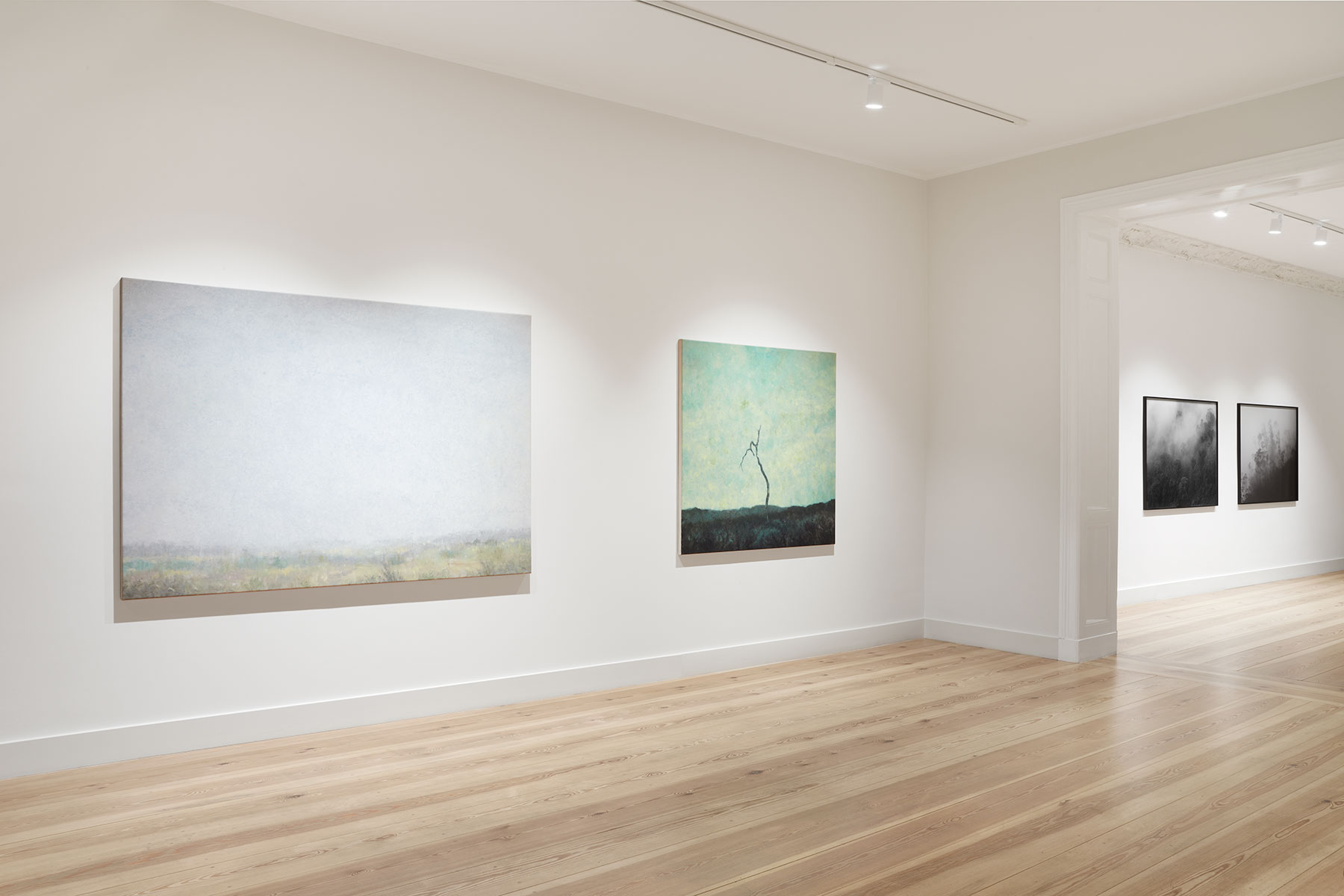
The Invention of Solitude
The Invention of Solitude is a memoir by Paul Auster, published in 1982. We chose this title because it aptly reflects the mood of this exhibition.
The occasion for Ludwig Spaude’s photographs is a biographical one. His childhood dreams lead him to the cloud forests of Nicaragua, Costa Rica, Madeira, Indonesia, and Colombia, where he finds those images he once dreamt. For weeks, he travelled alone with the camera, oscillating between real experience and his memories. What he sees fulfills his dreams, but also adds something new and unexpected. Added to this are sounds, physical exertions, taking photographs, which requires reflection and decisions.
In the solitude of the cloud forest, interior and exterior worlds conjoin, and the past and present merge. The photographer succeeds in capturing moments rich in sensation and sensibility. On the one hand, they seem dream-like and out of focus, on the other hand, they are razor-sharp depictions of reality. That is what makes them so special.
Sid Gastl does not need to travel. He finds everything he needs for his paintings in the studio. But his paintings emerge in a similar way: from an interplay of the interior and the exterior. Strictly speaking, reality does not exist, except the one created by him. He draws a tree, a ship, a forest – everything real that he wants to integrate into the painting. The choice of colours determines the atmosphere and effect of the painting. With him, too, the dreamy and vague predominate. Because he is convinced that we never can perceive everything. Being is always appearance, and how it really is remains its secret. Perhaps it is possible to approximate reality in the process of painting, where emotion and reality fuse. And yet: the “gentle cloud of the inexplicable” (Gastl) always rests on the world.
Ludwig Spaude (born in Berlin in 2001) studied from 2021-2025 at Ostkreuzschule for Fotografie in Berlin. In 2025, he received an Honorable Mention at the TruePicture Award.
Sid Gastl (born in Nürnberg in 1959), studied painting at the Akademie der Bildenden Künste Nürnberg. He received numerous prizes and awards, including a 2003 grant from Deutscher Kulturfonds, and the 2003 Woldermar-Winkler-Preis, and in 2017 the Art Prize of the Nürnberger Nachrichten. In addition to numerous solo and group shows in galleries, his works has been shown at Kunstverein Göppingen and Kunstverein Würzburg in 2013. In 2024, Ortner & Ortner Baukunst Berlin dedicated an exhibition to him, as did the Burkhard Brunn Collection in Frankfurt/Main. His work can be found in the Brandenburgische Kunstsammlungen Cottbus as well as in private collections, including the collections Wemhöner Herford/Berlin, Herzog Franz von Bayern Munich, Dr. Burkhard Brunn, Frankfurt/M, Nicola Gräf, Berlin, Stefan Glampe, Berlin, and Bernd von Geldern, Hamburg/Berlin.
Installation views by Sandy Volz
